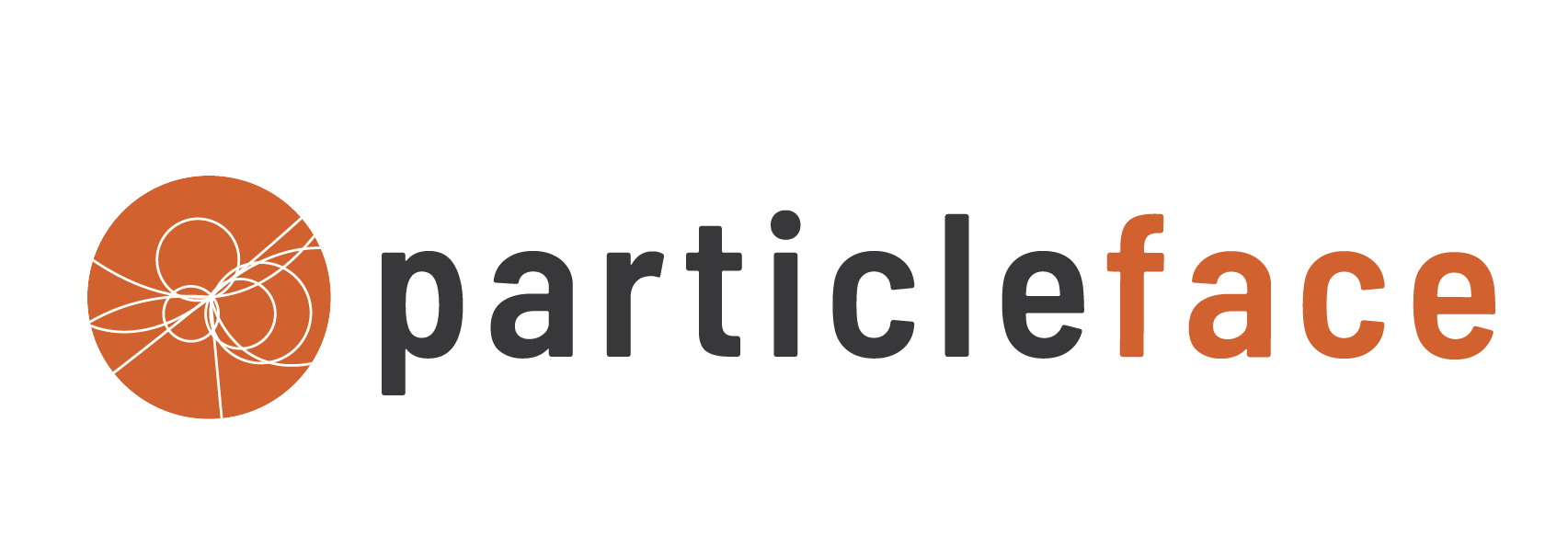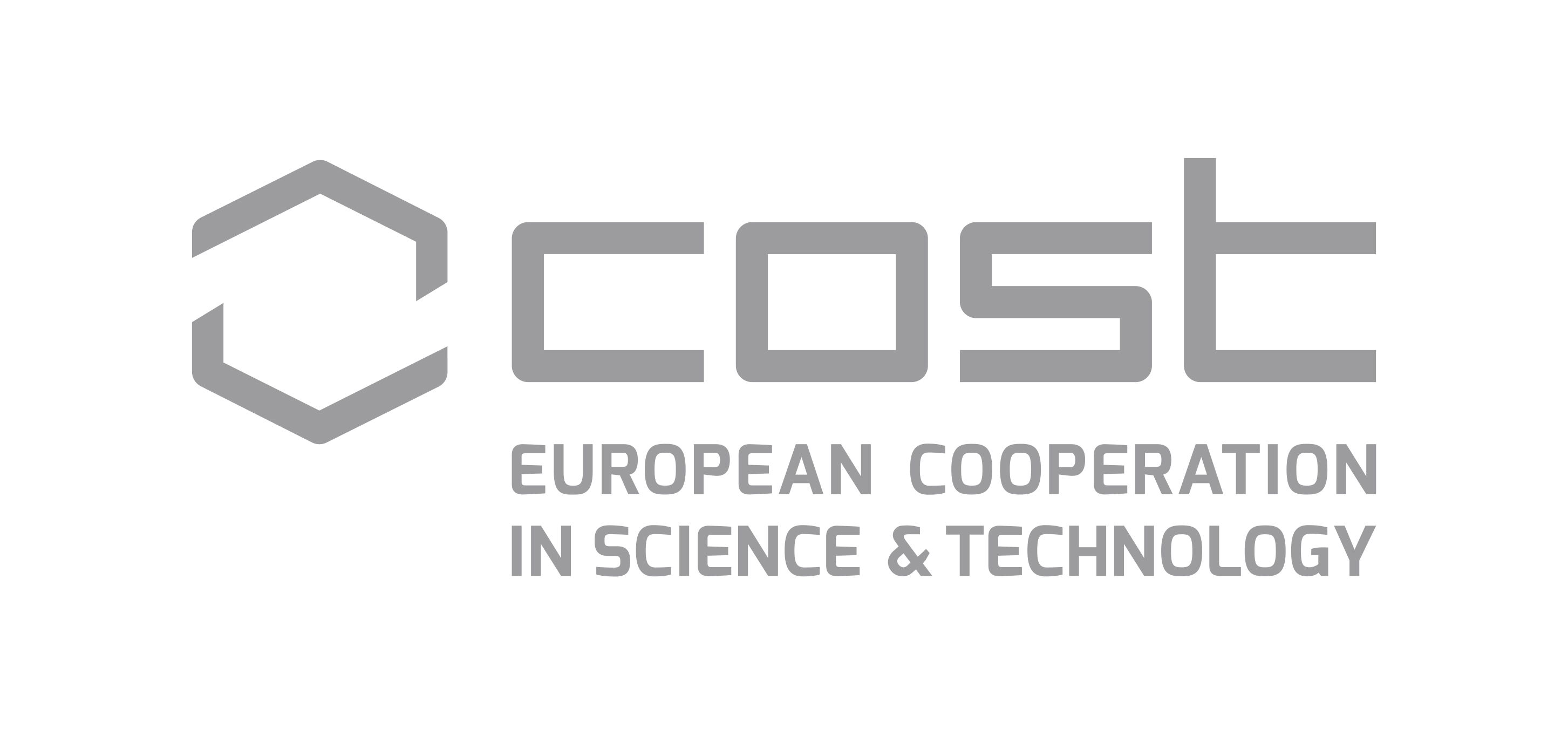PARTICLEFACE 2021: Unraveling New Physics Workshop & Management Committee Meeting
DVORANA (3. krilo)
Institute Ruđer Bošković
PARTICLEFACE 2021: Unraveling New Physics Workshop will provide an opportunity for the participants of the COST Action CA16201 “Unraveling new physics at the LHC through the precision frontier” to showcase their results and achievements.
The format of the Workshop is presently envisioned to be of a hybrid nature. All the talks will be accessible via Zoom while the capacity of the venue where the Workshop will take place is 26 persons under the current COVID-19 regulations. (Organizers will regularly update the status of the Workshop to reflect the most current state of affairs.)
The Workshop will be followed by the sixth Management Committee Meeting of the COST Action CA16201 to be held from 14:00 to 17:00 on July 16, 2021.
The Workshop is supported by:

-
-
09:15
→
09:30
WELCOME 15m DVORANA (3. krilo)
DVORANA (3. krilo)
Institute Ruđer Bošković
Institute Ruđer Bošković Bijenička cesta 54 HR-10000 Zagreb CroatiaSpeaker: Tania Robens (Rudjer Boskovic Institute (HR)) -
09:30
→
12:00
Working Group Meeting: Morning session DVORANA (3. krilo)
DVORANA (3. krilo)
Institute Ruđer Bošković
Institute Ruđer Bošković Bijenička cesta 54 HR-10000 Zagreb CroatiaConvener: Tania Robens (Rudjer Boskovic Institute (HR))-
09:30
Overview of the COST Action PARTICLEFACE 30mSpeaker: German Rodrigo (IFIC CSIC-UV)
-
10:00
Comparison of public codes for Drell-Yan processes at NNLO accuracy 30m
We present a detailed comparison of predictions at NNLO accuray computed by four publicly available computer codes for Drell-Yan processes at the LHC and Tevatron colliders. We point out that while there is agreement among the predictions at the next-to-leading order accuracy, the predictions at the next-to-next-to-leading order (NNLO) differ, whose extent depends on the observable. The sizes of the differences in general are at least similar, sometimes larger than the sizes of the NNLO corrections themselves. The talk will be based on arXiv: 2104.02400.
Speaker: Zoltan Laszlo Trocsanyi (University of Debrecen (HU)) -
10:30
COFFEE BREAK 30m
-
11:00
Precision predictions for the Higgs masses and mixings in the CP-violating MSSM 30m
The mass of the discovered Higgs boson is one of its most precisely measured properties with an experimental accuracy at the sub-percent level. Its measured value can place strong constraints on extensions of the Standard Model, in particular on the Minimal Supersymmetric Standard Model. To fully exploit this experimental precision, very precise predictions of the mass of the Standard-Model-like Higgs boson in the respective model are needed. In addition, the coupling behaviour of the discovered Higgs boson puts further constraints on viable Beyond Standard Model physics scenarios.
In this talk, I will focus on some recent developments of improving the predictions within the MSSM for scenarios with relatively heavy supersymmetric partner particles taking into account CP-violating phases. Part of the work has been performed during an STSM supported from the COST Action CA16201 PARTICLEFACE.
Speaker: Heidi Angelika Rzehak -
11:30
One-loop corrections to light neutrino masses in gauged U(1) extensions of the standard model 30m
We consider gauged U(1) extensions of the standard model of particle physics with three right-handed sterile neutrinos and a singlet scalar. The neutrinos obtain mass via the type I seesaw mechanism. We compute the one loop corrections to the elements of the tree level mass matrix of the light neutrinos and show explicitly the cancellation of the gauge dependent terms. We present a general formula for the gauge independent, finite one-loop corrections for arbitrary number new U(1) groups, new complex scalars and sterile neutrinos. We estimate the size of the corrections relative to the tree level mass matrix in a particular extension, the super-weak model. The talk will be based on arXiv: 2104.14571 and 2105.13360
Speaker: Zoltan Laszlo Trocsanyi (University of Debrecen (HU))
-
09:30
-
12:00
→
14:00
LUNCH 2h Wing 1 (RBI)
Wing 1
RBI
Wing 1, RBI -
14:00
→
16:30
Working Group Meeting: Afternoon session DVORANA (3. krilo)
DVORANA (3. krilo)
Institute Ruđer Bošković
Institute Ruđer Bošković Bijenička cesta 54 HR-10000 Zagreb CroatiaConvener: Ilja Dorsner (University of Split Faculty of Science (HR))-
14:00
Probing the internal structure of hadrons in $pp\to \gamma + \pi^+$ at NLO QCD + LO QED accuracy 30m
The accurate description of the internal structure of hadrons is a very challenging task. In order to compare the predictions with the highly-accurate experimental data, it is necessary to control any possible source of theoretical uncertainties. Thus, we can use the information extracted from final state measurement to constraint our knowledge about the internal structure of hadrons. In this talk, we describe how direct photon production can be exploited to unveil details about the partonic distributions inside protons. In this talk, we explain how to describe NLO QCD plus LO QED corrections to hadron plus photon production at collider, focusing on the accurate reconstruction of the partonic momentum fractions from experimentally accessible observables.
Speaker: David Renteria-Estrada (FCFM-UAS, Mexico) -
14:30
Composite Higgs states in the top-bottom condensation model 30m
Abstract
We use the Schwinger-DeWitt approach to address the four-fermion composite Higgs effective model proposed by Miransky, Tanabashi and Yamawaki (MTY). The surprising
benefit of such an approach is that it is possible to ascribe to a SM type Higgs a quark-antiquark structure of predominantly bottom flavor with a small top admixture, which in turn yields a Higgs mass compatible with the observed value of 125 GeV. We discuss in detail this result, as it goes against the common belief that this model and akin composite descriptions should predict a Higgs mass of the order of twice the top quark mass, contrary to empirical evidence. A further aspect of this approach is that it highlights the link of the SU(2)L X U(1)R symmetric four-fermion MTY model interactions of the heavy quark family to a specific two Higgs doublet model (2HDM), and the necessity to go beyond the one Higgs doublet to obtain the empirical Higgs mass within composite models. By appropriately fixing the symmetry defining interaction parameters, we show that the resulting CP preserving spectrum harbors the following collective states at the electroweak scale 246 GeV: a light scalar to which the standard Higgs is associated; a heavier neutral state preconized as the Nambu partner of the standard Higgs within the Nambu sum rule; the expected triplet of Goldstone bosons associated with the longitudinal polarizations of the electroweak massive bosons; and a neutral pseudoscalar state that in the limit of a global U(1)A symmetry would be a Goldstone mode. The anomalous breaking of this axial symmetry is a subleading effect in a large Nc counting scheme and we discuss how it modifies the leading order Nambu sum rule result and its relevance for the qualitative description of the spectrum.Speaker: Alexander A. Osipov (Dubna, JINR, Russia) -
15:00
COFFEE BREAK 30m
-
15:30
Towards precise false vacuum decay rates 30m
Appearance of meta-stable minima is a common phenomenon in beyond the standard model theories, at zero and finite temperatures. Computing the lifetime of such transitions may become computationally (and conceputally) involved, especially in the presence of multiple scalar fields and non-trivial potential configurations. I will present recent progress on the determination of the bounce and the associated FindBounce
package. I will then discuss the one loop quantum corrections and present an example of a completely analytically solvable model, where the entire rate was computed analytically.Speaker: Miha Nemevsek -
16:00
The Inert Doublet Model at current and future colliders 30m
TBA
Speaker: Tania Robens (Rudjer Boskovic Institute (HR))
-
14:00
-
09:15
→
09:30
-
-
09:25
→
12:00
Working Group Meeting: Morning session DVORANA (3. krilo)
DVORANA (3. krilo)
Institute Ruđer Bošković
Institute Ruđer Bošković Bijenička cesta 54 HR-10000 Zagreb CroatiaConvener: Richard Ruiz (Institute of Nuclear Physics (IFJ) PAN)-
09:30
Workings of WG1 with some special 30m
In my talk I try to summarize the various activities in WG1 happened in the past year. I also try to summarize the efforts led to a special issue in the Symmetry journal and give a brief overview of the contributions appearing in it.
Speaker: Adam Kardos (University of Debrecen) -
10:00
Progress in Amplitude Evolution and Improved Parton Branching Algorithms 30m
I will discuss recent development of the amplitude level evolution formalism at higher orders in QCD. I will highlight applications of the formalism towards improved parton branching algorithms as well as the resummation of non-global observables.
Speaker: Simon Platzer (University of Vienna (AT)) -
10:30
COFFEE BREAK 30m
-
11:00
Four-loop scattering amplitudes journey into the forest 30m
A crucial challenge in perturbative Quantum Field Theory is the description of quantum fluctuations at high-energy scattering processes by the calculation of multi-loop scattering amplitudes. Aiming for improving the efficiency of these computations, we delve into a new technique based on the Loop-Tree Duality (LTD). We analyse the multiloop topologies that appear for the first time at four loops and manage to assemble them in general expression, the N^4MLT universal topology. Based on the fact that the LTD enables to open any scattering amplitude in terms of convolutions of known subtopologies, we obtained the dual representation of the universal N^4MLT topology and determined the internal causal structure of the entire amplitude. Remarkably, we verified the causal conjecture for the N^4MLT family and present explicit causal representations of selected configurations, allowing a more efficient numerical implementation due to the absence of non-causal singularities.
Speaker: Norma Selomit Ramírez Uribe (IFIC) -
11:30
The pion-photon transition form factor at two loops in QCD 30m
Hard exclusive processes play a prominent role in exploring the strong interaction dynamics of hadronic reactions in the framework of QCD. In this context, the pion-photon transition form factor $\gamma \gamma^\ast \to \pi^0$ at large momentum transfer serves as one of the simplest exclusive processes for testing the theoretical predictions based upon perturbative QCD factorization.
Whereas the one-loop perturbative and certain power-suppressed contributions are already known and turn out to be important in view of precise experimental measurements and the scaling violation implied by the BaBar data, the two-loop correction at leading power remained unknown until recently.
Here we report on the two-loop calculation of the pion-photon transition form factor from the process $\gamma \gamma^\ast \to \pi^0$ at leading power. Besides discussing the applied multi-loop techniques, we put emphasis on the infrared subtraction and the role of evanescent operators, and present some numerical results.
Speaker: Tobias Huber (University of Siegen)
-
09:30
-
12:00
→
14:00
LUNCH 2h Wing 1 (RBI)
Wing 1
RBI
-
14:00
→
16:30
Working Group Meeting: Afternoon session DVORANA (3. krilo)
DVORANA (3. krilo)
Institute Ruđer Bošković
Institute Ruđer Bošković Bijenička cesta 54 HR-10000 Zagreb CroatiaConvener: Miha Nemevsek-
14:00
On the difference between FOPT and CIPT for hadronic tau decays 30m
Hadronic tau dacays are one of the important classic means to measure the value of the strong coupling. Since may years there is a discrepancy between two difference ways to treat the QCD perturbation series, called FOPT and CIPT, which is larger than the scale uncertainties of both individual series, and which add an additional annoying uncertainty in the extracted strong coupling value. There was no conceptual insight into this discrepancy up to now. In this talk I present the results of a recent work where it was shown that the Borel representations of both expansions in general differ, which contrasts the previous understanding that the Borel representation is unique. The difference implies that the OPE for the FOPT and the CIPT series in general differ and that the CIPT OPE does not have the standard form assumed in previous phenomenological analyses. Depending on the whether the QCD perturbation series is asymptotic or not, this may resolve the issue. Furthermore, phenomenological analyses based on CIPT have
Speaker: Andre Hoang (University of Vienna) -
14:30
Renormalization of non-singlet quark operator matrix elements for deep-inelastic scattering 30m
We calculate non-singlet quark operator matrix elements of deep-inelastic
scattering in the chiral limit including operators with total derivatives.
This extends previous calculations with zero-momentum transfer through the
operator vertex which provides the well-known anomalous dimensions for the
evolution of parton distributions, as well as calculations in off-forward kinematics exploiting conformal symmetry. Non-vanishing momentum-flow through the operator vertex leads to mixing
with total derivative operators under renormalization.
In the limit of a large number of quark flavors $n_f$, we determine the anomalous dimension matrix to fifth order in the $\overline{\mbox{MS}}$-scheme by exploiting consistency relations for the anomalous dimension matrix which follow from the renormalization
structure of the operators, combined with a direct calculation of the relevant diagrams up to fourth order.Speaker: Sam Van Thurenhout (Universität Hamburg) -
15:00
COFFEE BREAK 30m
-
15:30
An easy way to obtain beta functions in gauge theories within Implicit Regularization: a two-loop study 30m
Quantum Field Theory, as the keystone of particle physics, has offered great insights into deciphering the core of Nature. Despite its striking success, by adhering to local interactions, Quantum Field Theory suffers from the appearance of divergent quantities in intermediary steps of the calculation, which encompasses the need for some regularization/renormalization prescription. As an alternative to traditional methods, based on the analytic extension of space–time dimension, frameworks that stay in the physical dimension have emerged; Implicit Regularization (IREG) is one among them. One of the features of IREG is to consistently identify all UV-divergences of a generic Feynman diagram in terms of a well-defined set of basic divergent integrals, which do not need to be explicitly evaluated. This program can be implemented in an algorithmic way, allowing a straightforward extraction of renormalization constants, and the evaluation of beta functions. In this talk we discuss how this program is implemented using QED, QCD, and the SM as working examples up to two-loop order.
Speaker: Adriano Cherchiglia (Universidade Federal do ABC) -
16:00
Chiral Theories in Dimensional regularization and Breitenlohner-Maison/’t Hooft-Veltman scheme: application to chiral QED at 2-loops 30m
Dimensional regularization and renormalization in the Breitenlohner-Maison/’t Hooft-Veltman scheme, proved to be consistent at all loop orders, is a scheme that is widely used in phenomenological applications of (non-supersymmetric) QFTs. When being employed for theories with chiral fermions, however, the chiral and the BRST symmetries become broken, due to the specific γ5 treatment.
In this talk I present our latest work on the application of algebraic renormalization methods to resolve this problem, illustrated on the specific example of a chiral U(1) (QED) model, up to the two-loop level.
We calculate the unambiguous set of BRST-restoring local finite counterterms, that restore the BRST symmetry and ensures the consistency of this model in the dimensional scheme.This talk is based on one upcoming publication, and on our recent publication (1-loop): arXiv:2004.14398 (published in JHEP 08 (2020) 08, 024).
Speaker: Dr Hermès Bélusca-Maïto (Department of Physics, Faculty of Sciences, University of Zagreb)
-
14:00
-
09:25
→
12:00
-
-
09:30
→
12:00
Working Group Meeting: Morning session DVORANA (3. krilo)
DVORANA (3. krilo)
Institute Ruđer Bošković
Institute Ruđer Bošković Bijenička cesta 54 HR-10000 Zagreb CroatiaConvener: Adam Kardos (University of Debrecen)-
09:30
Unraveling New Physics at Future High Energy Colliders 30mSpeaker: Janusz Gluza (U. Silesia)
-
10:00
Vector Boson Scattering at Muon Colliders 30m
Starting from collider energies of a few TeV, electroweak vector boson fusion/scattering becomes the dominant production mode at lepton colliders for Standard Model and new physics processes that are relevant to studying the EW sector. In this regime, a muon collider would effectively act as a ``high-luminosity weak boson collider,'' offering a wide range of opportunities to precisely measure electroweak and Higgs couplings as well as discover new particles. We present recent Monte Carlo developments in the context of the MadGraph5_aMC@NLO platform that allow for the precise exploration of arbitrary Standard Model and new physics processes.
Speaker: Richard Ruiz (Institute of Nuclear Physics (IFJ) PAN) -
10:30
COFFEE BREAK 30m
-
11:00
Z-boson decay at the NNNLO level. 30m
The study of the Z-boson decay was crucial for the success of the LEP experiment. In $e^{+}e^{-}$ collisions, with the centre of mass energy matched to its mass, i.e. $\sim 91$ GeV, around 17 million Z-bosons were produced. Significant statistics allowed for precise measurements of its decay products along with the Standard Model (SM) parameters. The precision of LEP was so high that quantum corrections had to be taken into account, proving the correctness of the SM as a quantum gauge theory.
The Future Circular Collider in its lepton mode (FCC-ee) is one of the next-generation colliders along with ILC, CLIC and CEPC, which will improve the statistics immensely. Operating at the Z resonance, it will be able to produce $10^{12}$ Z-bosons and it will lead to at least one order of magnitude smaller experimental uncertainties of the electroweak observables (e.g. the Z-boson decay width).
These enormous statistics is a challenge for theory. Expected experimental errors are one to two orders of magnitude smaller than current theoretical errors, and more precise theoretical calculations are needed to meet experimental demands. It means that the complete 3-loop electroweak corrections to the Z-boson decay are highly needed.The complexity of the problem will be discussed along with the state of the art methods. Picking up the most difficult NNNLO (next-to-next-to-next-to-leading order) Z-boson diagrams, we show that recently improved calculational methods allow achieving desired NNNLO precision. The talk is an extension of the latest articles [1,2].
[1] I. Dubovyk, J. Usovitsch, K. Grzanka, Toward three-loop feynman massive diagram calculations, Symmetry 13 (6) (2021). doi:10.3390/sym13060975. URL https://www.mdpi.com/2073-8994/13/6/975
[2] I. Dubovyk, A. Freitas, J. Gluza, T. Riemann and J. Usovitsch,
“Electroweak pseudo-observables and Z-boson form factors at two-loop accuracy'',
JHEP08 (2019), 113, doi:10.1007/JHEP08(2019)113.Speaker: Krzysztof Grzanka (University of Silesia (PL)) - 11:30
-
09:30
-
12:00
→
14:00
LUNCH 2h Wing 1 (RBI)
Wing 1
RBI
-
14:00
→
17:00
Management Committee Meeting DVORANA (3. krilo)
DVORANA (3. krilo)
Institute Ruđer Bošković
Institute Ruđer Bošković Bijenička cesta 54 HR-10000 Zagreb Croatia
-
09:30
→
12:00

